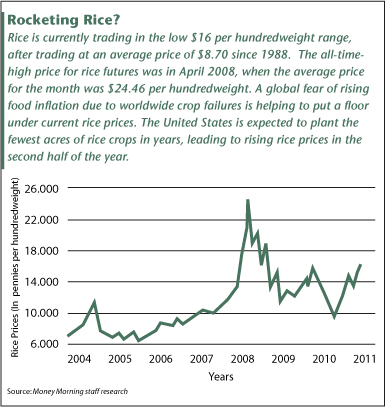This gallery contains 0 photos →
Tag: Commodities
Why you should Buy Rice Futures

This gallery contains 0 photos →
Fed Keeps Pedal to the Metal as Egypt Unrest Weighs on Markets

This gallery contains 3 photos →
Different Investment Methods
There are many different factors to consider when investing. Each investment option out there can be very powerful if it is done wisely. Some of the most powerful methods of investing are Buying and Selling Stocks, Mutual Funds, Day Trading, Penny Stocks, Bonds, Real Estate, and Tax Liens.
As you can see there are many options for those who are interested in investing. If you do your research it will make your decision much easier.
Getting Started With Bitcoins

This gallery contains 0 photos →